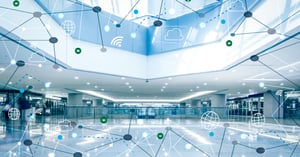By now, you’ve probably heard or seen the term ‘Modern Workplace’. You might even have an inkling of what it is. But here’s the simple bottom line: The Modern Workplace is whatever and whenever you want it to be.
Since it’s the start of yet another new year, what better opportunity to reflect on how the time flies by. In that vein, consider this: Microsoft Office 365 was released in 2011.
It’s arguable that this development, aside from heralding a major shift in the vendor’s business model, was the genesis of the Modern Workplace.
That’s because, as the most popular office productivity suite and the jewel in Microsoft’s crown, the shift into the cloud laid foundations for ‘work anywhere on any device’.
Of course, foundations are not a finished edifice and back in those days, Office 365 didn’t have apps for iPhones and Androids, the iPad was only a year old, and cloud itself was in its infancy. Microsoft had only just purchased Skype (confounding the market) from private investors and we’d have to wait until 2013 for the first Intel-based Surface.
Since those early years, Skype has evolved into Skype for Business; Slack popped up out of nowhere and Microsoft has subsequently introduced Teams which is steadily replacing Skype for Business. Devices have come a long way, including smartphones and the apps on them, as well as Microsoft’s own devices and the rest of the market with them. And Microsoft has become a cloud powerhouse, with Azure providing a wide range of infrastructure services; it’s even become a leading data security vendor.
Connectivity, too, has also become practically ubiquitous.
These are among the technological building blocks of the Modern Workplace. But here’s the thing. The Modern Workplace depends on a few other ‘structural’ fundamentals and the biggest of those is probably socio-cultural.
That’s because the Modern Workplace is also a place and an approach. The place could be (and often is) anywhere: your home, your coffee shop, an airport lounge, a seat on a bus.
The approach is enabling information workers with those building blocks as tools, and then giving them the freedom and trusting in their responsibility to get things done not ‘during office hours’, but rather ‘when and by when things need to be done’.
In the cloud era, the enabling tools for the Modern Workplace are readily accessible. As we by now know, enterprise-grade technology is available to practically any business, with low monthly pricing and a staggering range of options (Azure offers around 600 services today).
What this means is that for any business looking to move into modern ways of working, where collaboration, flexibility, availability and initiative take the place of cubicles, isolation, clock-watching and measuring productivity by hours rather than results delivered, is this:
Moving into the Modern Workplace is incredibly easy.
Paradoxically, it could also be incredibly difficult.
That’s because it implies fundamental changes to how work is done.
Some of these changes are coming ‘generationally’, as younger people move into the workplace. But the incumbents always have the upper hand (and so they should – you shouldn’t change how you work to suit some young whippersnapper) in establishing and preserving culture of any sort.
But the real impetus for any change must be linked to value and results.
This is where the Modern Workplace makes such a powerful value proposition. We already know that the boundaries between work and play are thoroughly eroded. Intrinsically, we know good people are engaged, responsible and dependable. We also know that in our personal lives, there are routinely circumstances around children, pets, homes, etc., that make it difficult to be at work and in work mode ‘strictly from 9 to 5’.
The Modern Workplace sweeps all that aside. It gives people flexibility and freedom based on trust and enabled by tools that let your office come with you, securely, no matter where you are.
So long, of course, as your company can handle the culture shift.
It’s something we’re doing ourselves at Verde Group, because it just makes such good sense for our own employees. Is it easy? No, culture changes even if they reflect ‘the way the world is going’ rarely are. Is it rewarding? We’re already known for retaining staff members for decades; put it to you this way, people are happier, more productive and don’t have any issues being available after hours should a crisis demand it.
Because thanks to the Modern Workplace, we now have the flexibility to work from home when necessary, when travelling, whenever. We fully expect this to contribute to even greater employee satisfaction.
There’s a lot on offer with the Modern Workplace; at the very least it makes for a fascinating discussion as to how it can be applied in different types of businesses (and it has to be flexible – your Modern Workplace won’t be the same as ours, though it will rest on the same building blocks).
If you’re keen to explore the possibilities, get in touch. It could be the first steps into a bold new future for your company and your employees.

